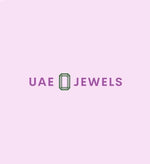
July's Birthstone: Ruby
Ruby is July’s birthstone and the gem commonly associated with 15thand 40th marriage anniversaries. It is known for a beautiful red that makes it one of the most desired gems in the jewelry industry. Rubies are formed when the mineral Corundum contains trace amounts of the element Chromium, causing a change in the mineral’s crystal structure and it’s color (red). The name Ruby is derived from the Latin word ‘ruber’ meaning red, due to which the gemstone is often seen symbolizing love, passion, boldness, and bravery. Throughout history, such associations have kept rubies in high demand and also contribute to making it one of the most expensive per-carat price of any colored stone. A buyer’s guide has been established with 4C’s to help buyers choose rubies wisely and understand their value better.

The 4C’s, just like the one characterizing diamonds, include carat weight, cut, clarity, and color. The finest rubies would have large carat weight, no visible inclusions that reduce transparency and brightness, pure and vibrant red to slightly purplish red color, and the cut being most commonly oval and cushion cuts. These cuts afford the gemstone brilliant cut crowns and triangular facets that increase light reflection of the stone without dropping down much of the rough’s weight. Such characteristics are very rare to find and hence significantly expensive. However, commercial quality, synthetic, and imitation rubies are widely available to accommodate consumers on a budget. Synthetic corundum (the first gem to be created in laboratory) can be made by many different processes therefore the final product is available at very affordable to more expensive prices. Another cheaper alternative used is colorless quartz that is subjected to thermal shock and dye allowing the material to simulate ruby gems. This process is easily distinguished from natural rubies by using a microscope.

The 4C’s may help you get a better idea about the characteristics of the gem. However, we have a few extra recommendations when buying rubies to attain the perfect gem and value. First, work with a trusted jeweler who has a good background with rubies and has various pieces to show you side by side. This will allow you to identify and differentiate between characteristics. A trusted jeweler will help you distinguish between natural, heat treated and glass filled stones that are very different in price and quality. Second, many associate Burmese rubies to be the best rubies available today, but one should not confuse origin with quality; the best mines can produce some low quality stones while several countries without fame for ruby can produce really fine quality gems. Finally, when in doubt of ruby characteristics it is best to ask for certification from independent labs such as GIA or IGI that are specialized in evaluating rubies and other gems to tell whether they are natural or whether there is evidence of treatment.
